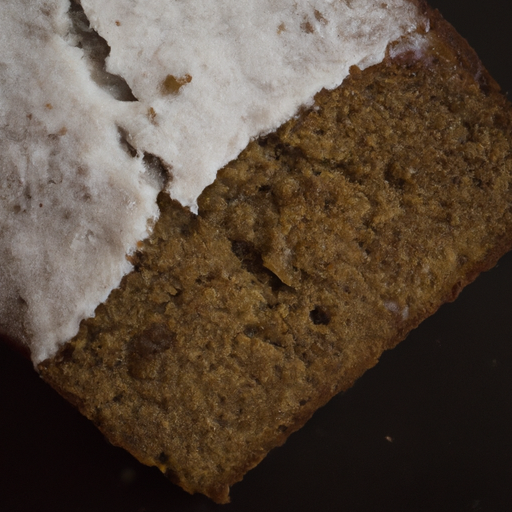In the culinary world, there’s a never-ending debate between baking soda and baking powder, and knowing when to use each can make all the difference in your baking endeavors. With Tastepan’s expert cooking tips and techniques, you’ll be equipped with the knowledge to navigate these two leavening agents effectively. From understanding their chemical compositions to learning how they interact with other ingredients, our comprehensive guides and videos will transform you into a kitchen pro. So, whether you’re whipping up fluffy pancakes or creating a perfectly risen cake, we’ve got you covered when it comes to the ultimate baking soda vs. baking powder showdown.
Baking Soda

What is Baking Soda?
Baking soda, also known as sodium bicarbonate, is a white crystalline powder that is commonly used in baking as a leavening agent. It has a mild alkaline taste and is often used in recipes to help baked goods rise and become light and fluffy.
Chemical Composition
Baking soda is composed of sodium, hydrogen, carbon, and oxygen atoms. Its chemical formula is NaHCO3, which indicates the presence of one sodium (Na) atom, one hydrogen (H) atom, one carbon (C) atom, and three oxygen (O) atoms.
Leavening Agent
One of the main purposes of baking soda in baking is to act as a leavening agent. When combined with an acidic ingredient, such as yogurt or vinegar, baking soda produces carbon dioxide gas. This gas gets trapped in the dough or batter and causes it to expand, resulting in a lighter texture. The reaction occurs immediately, so it’s important to bake your goods right away after mixing in the baking soda.
Neutralizing Agent
In addition to its leavening properties, baking soda also acts as a neutralizing agent. It can help balance the acidity of certain ingredients, such as acidic fruits or buttermilk, in baking recipes. This is particularly important for achieving the right flavor and texture in your baked goods.
When to Use Baking Soda
Baking soda is best suited for recipes that include acidic ingredients, as the acidic component is necessary to activate the leavening properties of the soda. Some examples of recipes where baking soda is commonly used include quick bread like banana bread, cookies, and pancakes. Its ability to create a light and fluffy texture makes it a popular choice in these types of recipes.
Baking Powder
What is Baking Powder?
Baking powder is a leavening agent that is commonly used in baking. It is actually a mixture of baking soda, an acid, and a moisture-absorbing agent. This combination allows baking powder to be a complete leavening agent on its own, without needing an additional acidic ingredient to activate it.
Chemical Composition
Baking powder is a combination of three main components: baking soda (sodium bicarbonate), an acid (such as cream of tartar), and a moisture-absorbing agent (such as cornstarch). The baking soda in the mixture acts as the leavening agent, the acid provides the acidic component needed for the reaction, and the moisture-absorbing agent helps prevent the mixture from reacting prematurely.
Leavening Agents
As mentioned earlier, baking powder consists of both baking soda and an acid. The acid is usually cream of tartar, but other acids like monocalcium phosphate or sodium aluminum sulfate can also be used. When moisture is added to the baking powder, a chemical reaction occurs between the baking soda and the acid, resulting in the release of carbon dioxide gas, which causes the dough or batter to rise.

Types of Baking Powder
There are two main types of baking powder: single-acting and double-acting. Single-acting baking powder contains only one type of acid, which reacts immediately when moisture is added. Double-acting baking powder, on the other hand, contains two different types of acid. The first acid reacts upon contact with moisture, while the second acid reacts when exposed to heat during baking.
When to Use Baking Powder
Baking powder is suitable for recipes that do not include an acidic ingredient or require immediate leavening action. It is commonly used in recipes for cakes, muffins, and biscuits. Since baking powder contains both the leavening agent and the acid needed for the reaction, it is a convenient option for achieving a rise in your baked goods.
Key Differences
Leavening Power
Baking soda and baking powder differ in terms of their leavening power. Baking soda is about three to four times stronger than baking powder. This means you need to use a smaller amount of baking soda compared to baking powder to achieve the same rise in your recipes. It’s important to carefully measure the amount of leavening agent to avoid any unexpected results.
Reaction Time
Another notable difference between baking soda and baking powder is the reaction time. Baking soda reacts immediately when combined with an acidic ingredient and moisture, while baking powder has a two-step reaction. The first reaction occurs upon contact with moisture, and the second reaction takes place when exposed to heat during baking. This delayed reaction makes baking powder more suitable for recipes that require longer baking times.
Flavor
Baking soda and baking powder can have an impact on the flavor of your baked goods. Baking soda has a slightly salty taste, which can be noticeable if too much is used. On the other hand, some types of baking powder may leave a slightly bitter taste if not properly balanced with other ingredients. It’s important to use the recommended amount of leavening agent to avoid any undesirable flavors in your finished products.
Amount Conversion
When substituting baking soda for baking powder or vice versa, it’s important to consider the amount conversion. As mentioned earlier, baking soda is stronger than baking powder, so you will need to use less baking soda if substituting for baking powder. Generally, you can use three times the amount of baking powder when substituting for baking soda. However, it’s best to consult a reliable recipe or conversion chart for accurate measurements.
Storage
Both baking soda and baking powder should be stored in a cool and dry place. Baking soda is relatively stable and can last for a long time if properly stored. Baking powder, on the other hand, has a limited shelf life due to the presence of moisture-absorbing agents. It’s important to check the expiration date on the packaging and replace your baking powder accordingly to ensure optimal leavening performance.
Recipes for Baking Soda
Quick Bread
Baking soda is commonly used in quick bread recipes, such as banana bread or zucchini bread. The combination of the acidic ingredients and the baking soda creates a light and fluffy texture in these types of bread. When using baking soda in quick bread recipes, it’s important to mix the ingredients quickly and bake the bread immediately to take advantage of the immediate leavening action of the baking soda.

Cookies
Baking soda is a key ingredient in many cookie recipes. It helps the cookies spread while baking and gives them a soft and chewy texture. When using baking soda in cookies, be sure to use the recommended amount and avoid overcrowding the baking sheet to ensure even spreading and baking.
Pancakes
Baking soda can also be used to make fluffy pancakes. The acidity of ingredients like buttermilk or yogurt helps activate the baking soda, resulting in light and airy pancakes. For best results, mix the batter just until combined and cook the pancakes on a preheated griddle or skillet.
Recipes for Baking Powder
Cake
Baking powder is a common ingredient in cake recipes. It provides the necessary leavening power to make the cake rise and creates a light and tender crumb. When using baking powder in cake recipes, carefully follow the measurements and instructions to achieve the desired texture and height.
Muffins
Similar to cakes, muffins also benefit from the leavening action of baking powder. Baking powder helps create the characteristic domed shape and light texture in muffins. Whether you’re making blueberry muffins or chocolate chip muffins, baking powder is an essential ingredient for success.
Biscuits
Baking powder is often used in biscuit recipes to achieve a flaky and tender texture. The reaction of baking powder with the liquid and fat in the dough creates layers in the biscuits, resulting in a light and buttery treat. When making biscuits, handle the dough gently and avoid overmixing to ensure a light and fluffy result.
Tips for Using Baking Soda
Activation and Shelf Life
To activate the leavening properties of baking soda, it’s important to combine it with an acidic ingredient and moisture. This will trigger the release of carbon dioxide gas, which helps the dough or batter rise. Additionally, properly store your baking soda in a cool and dry place to maximize its shelf life and ensure optimal performance.
Proper Measurements
Using the correct amount of baking soda is crucial for achieving the desired results in your baking. Too little baking soda may result in a dense and flat texture, while too much can lead to a soapy taste and an over-expanded texture. Follow the recipe instructions or consult a reliable baking resource for accurate measurements to avoid any baking mishaps.
Tips for Using Baking Powder
Freshness Check
Before using baking powder, it’s important to check its freshness. To do this, mix a small amount of baking powder with water. If it fizzes and bubbles, it means the baking powder is still active and can be used. If there is no reaction, it’s best to replace the baking powder with a fresh batch to ensure proper leavening in your recipes.
Substitutes
In case you run out of baking powder, you can create a substitute using baking soda and cream of tartar. For each teaspoon of baking powder needed, combine 1/4 teaspoon of baking soda with 1/2 teaspoon of cream of tartar. This homemade substitute can be used as a temporary solution until you can replenish your baking powder supply.
Common Mistakes to Avoid
Confusing the Two
One common mistake is confusing baking soda with baking powder and vice versa. While they both serve similar purposes in baking, it’s important to understand their differences and use the correct one in your recipes. Confusing the two can result in undesirable flavor, texture, or rise in your baked goods.
Using Too Much
Using more than the recommended amount of baking soda or baking powder can negatively affect your baked goods. It can lead to an unpleasant taste, a dense texture, or even cause your batter to overflow while baking. Always measure accurately and follow the recipe instructions to achieve the best results.
Not Measuring Correctly
Accurate measurements are key in baking, especially when it comes to leavening agents like baking soda and baking powder. Slight variations in the amount used can significantly impact the texture and rise of your baked goods. Use proper measuring tools and level off the ingredients to ensure precise measurements.
Conclusion
Understanding the differences between baking soda and baking powder is essential for successful baking. Baking soda is a powerful leavening agent that requires an acidic ingredient to activate its leavening properties, while baking powder is a complete leavening agent on its own. Each has its own specific uses in different recipes and understanding when to use each one can help you achieve the desired texture and rise in your baked goods. Remember to measure accurately, check for freshness, and enjoy the delightful creations you can make with baking soda and baking powder. Happy baking!

